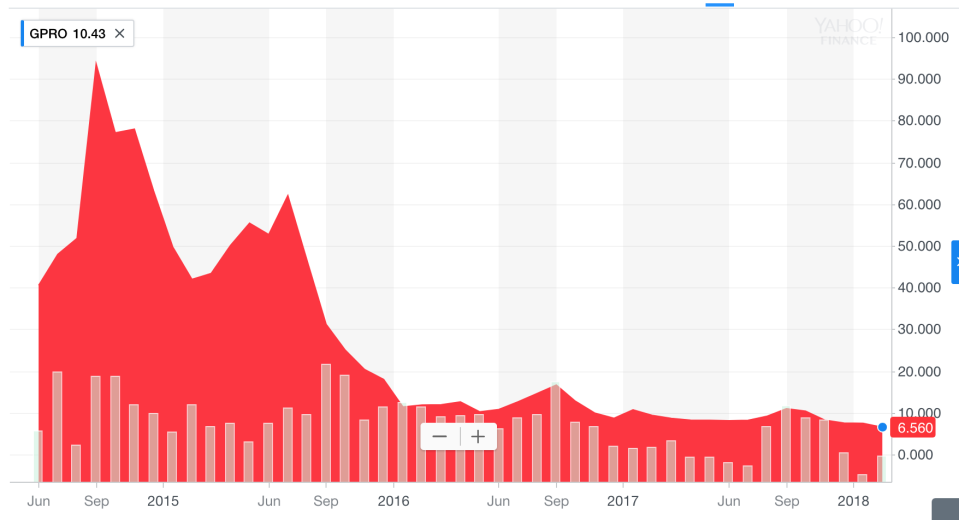Social media made GoPro — and then broke it

GoPro’s (GPRO) stock chart looks like the kind of mountain you’d use a GoPro on when you’re climbing it. A steep incline, a few jagged Himalayan summits and then a decline down to sea level, where it is now exploring a sale with the help of JPMorgan (JPM).
GoPro was once so promising, a success story of a camera actually doing well in the phone age, as the demand for photo and video equipment floundered. From a business sense, GoPro’s “what happened” is likely a complicated issue of company hubris, management error, falling prices for hardware, and competitors.
It’s easy to point to the extremely cheap, generic substitutes knocking the company off its pedestal. Take, for example, the Campark-branded $49 4K-action cam that looks suspiciously like a GoPro sold on Amazon. With similar specs at a fraction of the price — $199 or $299 for some of the nice ones — a consumer needs a reason to choose GoPro, and that reason is getting harder to find.

And at the same time these extremely cheap substitutes began popping up, interest began to fade. Anecdotally, stock performance-wise, and Google Trends-wise, the interest faded a decline is evident.
In a general sense, however, the action-cam industry seemed set up to fail from the beginning. The same forces that propelled GoPro’s stock up were to be its undoing: social media and jaw-dropping videos.
The bar is too high for action-cam videos
When the GoPro came on the scene, it enabled ancient dreams to come true, to see things that had never-before been seen. A camera on an eagle as it hunts a fox, for example. And you, too, could partake in the discoveries, showing people what it’s like from a POV camera.
From Red Bull and GoPro’s promotion of action stunts through radical action videos, public perception of what was cool or “baller” led to an impossibly high standard. To illustrate how outrageous things have become, one only has to look to a stunt Red Bull pulled in November with some wingsuit flyers.
Jumping from a mountain, not one but two managed to fly into a moving plane. While an incredible achievement, stunts like this appear to serve GoPro’s promotion of extreme sports. But really, it just means that a black diamond mountain bike trail video looks like a kindergartener learning on training wheels. As a culture, we have become desensitized to spectacles as more and more people contributed their best efforts to make cool videos and raised the bar to an impossibly high level.
For a moment, the proliferation of drones seemed as if it might breathe some life into action cams, but GoPro didn’t latch on soon enough and has been relegated to catch up. But even that industry may also be vanquished by social media and its expectations for innovative stunts and uses that the average customer cannot hope to fulfill.
While GoPro and its investors may be losing as the demand fades, GoPro has had an incredible impact, consider its failures. The public is left with cheap cameras, some pretty wild videos, and GoPro has joined Kleenex and Band-Aid as brand names that have transcended their company to become the generic.
Ethan Wolff-Mann is a writer at Yahoo Finance. Follow him on Twitter @ewolffmann. Confidential tip line: FinanceTips[at]oath[.com].
The crypto boom may have made criminals richer
The phone industry’s clever plan to stop robocalls
Ranked: Banks by number of consumer complaints
How to stop people tracking whether you’ve opened their email
Google Trends is a surprisingly good way to predict Netflix subscriber growth

